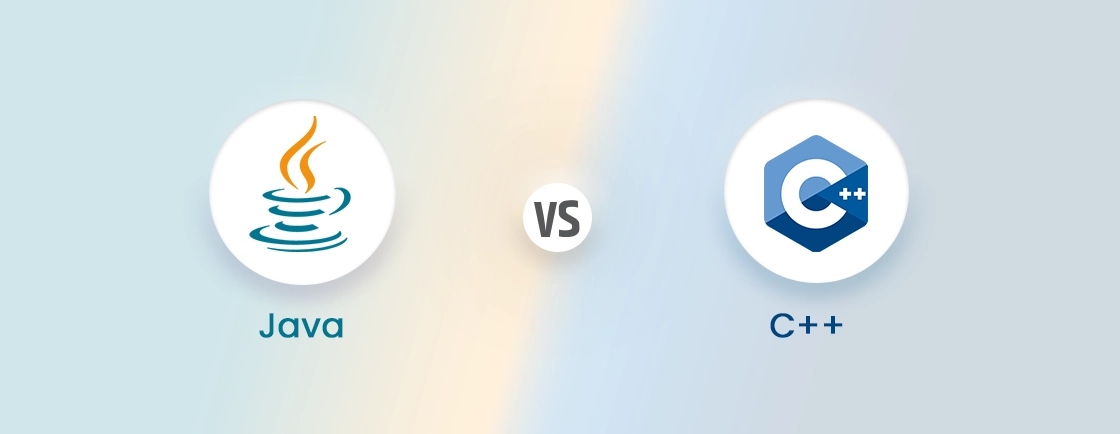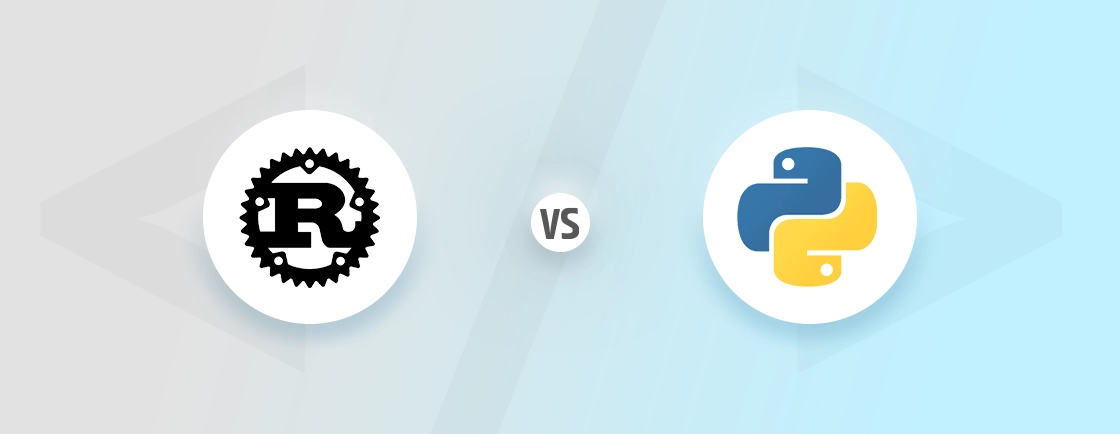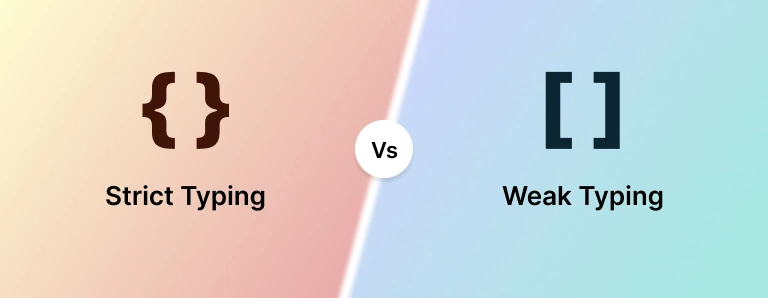Table of Contents
Nowadays, where web development is thoroughly evolving each day, two terms that frequently take center are frontend development and backend development which integral forces oversee the creation and functionalities of every website.
The intricate hop of Front-end and Back-end development directs the user experience, functionality, and overall success of online platforms. While they share the same phase, they play distinct and equally vital roles, each contributing its unique prowess to the final act.
But what exactly is the difference between them, and how do they collaborate to bring a seamless online experience to users? Let’s move further into the world of front-end vs. back-end development to understand their distinctions and the significance of each.
Introduction to Front end vs Back end
While spinning around web development practices, understanding the distinctions between front-end and back-end is fundamental. These two facets of web development play distinct yet interdependent roles, shaping the digital experiences we encounter daily.
Let’s dig more into front-end and back-end development:
Frontend
Frontend Development refers to the part of a website or application that users directly interact with. It encompasses the visual and interactive elements that users see and engage with in their web browsers.
Frontend development focuses on creating an engaging and user-friendly user interface (UI) and ensuring a smooth user experience (UX). Here are the key aspects of front-end development:
1. User Interface (UI)
- Frontend development revolves around creating the user interface (UI) of websites and web applications.
- This involves designing and structuring the visual elements that users see and interact with, such as buttons, navigation menus, text, images, and forms.
- The goal is to create an aesthetically pleasing and user-friendly layout that ensures a positive user experience.
2. Technologies
- Frontend development relies on a set of core technologies, including HTML (Hypertext Markup Language), CSS (Cascading Style Sheets), and JavaScript.
- HTML is used for structuring the content and layout of web pages and defining the hierarchy of elements.
- CSS is responsible for styling and formatting web page elements and determining the presentation, including fonts, colors, spacing, and layout.
- JavaScript adds interactivity and dynamic functionality to web pages, enabling features like animations, form validation, and responsive design.
3. Responsive Design
- Frontend developers ensure that websites and applications are designed to be responsive, adapting seamlessly to various screen sizes and devices, such as desktops, tablets, and smartphones.
- This involves creating layouts that automatically adjust and reorganize content to provide an optimal viewing experience on different devices.
- Responsive design is crucial for ensuring a consistent and user-friendly experience across diverse platforms, improving accessibility for a broader audience.
Front-end development combines creative design principles with technical expertise to craft the visual and interactive aspects of digital experiences.
It’s a multidisciplinary field that strives to create visually appealing, functional, and accessible user interfaces to engage and satisfy website visitors and application users.
Backend
Backend development includes the behind-the-scenes of websites and applications, that works away but to ensure seamless web views and functionalities of users.
It focuses on server-side development and encompasses the technologies and logic that power the functionality and data management of a website or application. Here are the key aspects of backend development:
1. Data Management and Logic
- Backend development is the backbone of web applications, handling the management of data and the logic that drives functionality.
- This involves working with databases to store, retrieve, and manipulate data, ensuring data integrity and security.
- Back-end developers create the server-side code that processes requests, executes complex algorithms, and manages the business rules of the application.
2. Technologies and Frameworks
- The programming languages and frameworks backend development relies on include PHP, Python, Ruby on Rails, Node.js, and others.
- These technologies enable the creation of server-side applications, handle routing, and provide the infrastructure for server configuration.
- The choice of technology depends on the specific requirements of the project, scalability considerations, and developer preferences.
3. Server Architecture and Scalability
- Back-end developers create server architectures that ensure the application can handle varying levels of traffic and remain responsive under load.
- This includes load balancing to distribute incoming requests, optimizing database queries, and implementing caching mechanisms for improved performance.
- Scalability planning ensures that the application can grow to accommodate increasing user demands and maintain a high level of service.
Backend development is responsible for the robust, secure, and efficient operation of web applications.
It deals with the core data management and processing aspects and relies on a variety of technologies and frameworks for a seamless user experience. Backend collaborates with frontend development to deliver fully functional and dynamic web applications.
Role of Frontend Development and Backend Development
The functionalities of frontend development and back-end development in applications are distinct yet complementary. Both play crucial roles in creating a fully functional and user-friendly website or web application. Let’s explore the roles of front-end and back-end development:
Role of Frontend Development
The role of Frontend development is crucial for creating the user-facing elements of a website or web application. Frontend developers are responsible for designing, building, and optimizing the visual and interactive aspects that users directly interact with.
Here is an in-depth look at the role of Frontend Development:
1. Visual Design
Frontend developers are responsible for creating the visual elements that users interact with. This includes designing the layout, typography, color schemes, and overall aesthetics of the user interface.
Moreover, to achieve the desired frontend interface, you can also collaborate with frontend development services.
2. User Experience (UX) Enhancement
Front-end developers focus on optimizing the user experience. This involves ensuring that the website is intuitive to navigate, loads quickly, and is accessible on various devices and screen sizes. They strive to create a seamless and enjoyable user journey.
3. Cross-Browser Compatibility
It’s the responsibility of front-end developers to ensure that the website functions correctly on different web browsers such as Chrome, Firefox, Safari, and Edge. This includes handling browser-specific quirks and ensuring a consistent appearance.
Role of Backend Development
Backend Development in web development plays a vital role in building the server-side components of a website or web application. Backend developers handle data management, server logic, and the technical infrastructure that powers the functionality of the platform.
Here is a detailed overview of the role of Back-end Development:
1. Server-Side Logic
Back-end development involves writing server-side code to handle the business logic of the application. This includes processing user requests, performing calculations, and ensuring the security and integrity of data.
2. API Development
Back-end developers create APIs (Application Programming Interfaces) that allow communication between the front-end and back-end components. These APIs enable data exchange and integration with third-party services, providing the necessary data to the frontend.
3. Server Management and Deployment
Back-end developers are responsible for server management, ensuring that the web application is deployed on servers and configured correctly for production use.
They handle server performance, security, and scaling to accommodate user traffic. Thus, a crucial role that if not integrated well can result in adverse web performance and user results.
To ensure that your application doesn’t get stuck in such consequences you can directly get in touch with an experienced backend development company and let the experts handle everything for you.
In summary, front-end development is responsible for the visual and interactive aspects of a website, focusing on user interface design and user experience.
Backend development handles data management, server-side logic, and the technical infrastructure required for the website to function. Both frontend and backend development work together to create a complete and fully functional web application.
Technologies Used in Front end Development vs Back end Development
Both development technologies include distinct sets of technologies to fulfill their respective roles. Here’s a breakdown of the technologies commonly used in both front-end and back-end development:
Most Used Frontend Technologies
Front-end development counts on a range of technologies and tools to create the user interface and enhance the user experience of websites and web applications. Here are some of the key front-end development technologies:
1. HTML5 (Hypertext Markup Language 5)
- HTML5 serves as the standard markup language for structuring the content and elements on web pages.
- It defines the semantic structure of a web document, including headings, paragraphs, lists, forms, and multimedia.
- Right HTML5 practices help in turning the complete overview of your business on the web visitors, and higher the changes to convert them to long-term clients.
- Thus, letting a newbie or inexperienced individual work on your project can lead to an adverse impact on application performance.
2. CSS3 (Cascading Style Sheets 3)
- CSS3 is responsible for styling web content, allowing front-end developers to control the layout, visual design, and formatting of web elements.
- It enables precise customization of colors, fonts, spacing, and responsive layouts.
- It introduces advanced features like animations and transitions, making it possible to create visually engaging and dynamic user interfaces.
3. JavaScript
- JavaScript is a versatile programming language that provides interactivity and dynamic behavior to web pages.
- It enables the creation of interactive features such as sliders, animations, and real-time updates.
- Hence, this frontend language has a bit more complexities than HTML5 and CSS3, to ensure it functions in the same way you desire.
4. AngularJS
- AngularJS, developed by Google, is a front-end framework for building dynamic single-page applications (SPAs).
- It offers a comprehensive set of tools for creating complex, data-driven user interfaces.
- It offers features like two-way data binding, dependency injection, and a modular architecture, making it well-suited for complex web applications.
5. Vue.js
- Vue.js is a progressive JavaScript framework used for building user interfaces that also includes the best of all 15 Libraries of UI components.
- Its lightweight nature and simplicity make it ideal for integrating into projects of various scales.
- Vue.js supports component-based development, which simplifies code organization and reusability, making it a great choice for both small and large projects.
Most Used Backend Technologies
Back-end development leverages various technologies and tools to manage data, handle server-side logic, and support the functionality of web applications. Here are key back-end development technologies:
1. PHP
- PHP is a server-side scripting language that facilitates the development of dynamic web applications.
- It is known for its wide database support, making it versatile for back-end data processing.
2. Node.js
- Node.js is a runtime environment that allows developers to run JavaScript on the server side.
- It excels in building scalable and real-time applications, utilizing non-blocking I/O for performance.
- It benefits from a vibrant package ecosystem through npm (Node Package Manager), which provides a set of libraries and modules for developers to use in their projects.
3. .NET Core
- .NET Core is an open-source, cross-platform framework for web application development.
- It supports multiple programming languages and is known for high-performance and robust back-end systems.
- Its cross-platform compatibility enables developers to create applications that run seamlessly on various operating systems, including Windows, Linux, and macOS.
4. Python
- Python is a versatile and readable language widely used for back-end development.
- It boasts a strong standard library that covers a wide range of functionalities, simplifying the development process.
- Python is renowned for its vast and active community, which provides extensive documentation, libraries, and community support.
5. Ruby on Rails
- Ruby on Rails is a web application framework that uses the Ruby programming language.
- It emphasizes developer productivity by encouraging the use of best practices and conventions, reducing the need for boilerplate code.
- Ruby on Rails follows the “Don’t Repeat Yourself” (DRY) principle, which promotes code reusability and maintainability.
These technologies are fundamental to both front-end and back-end development and are often chosen based on project requirements, developer preferences, and the specific goals of the website or web application.
To conclude which one will work out best for you, first, you must consider consulting your requirements with web development services.
Major Differences in Front-end vs Back-end
Frontend and backend development are distinct aspects of web development, each with its unique roles, responsibilities, and technologies. Here are the major differences between front-end and back-end development:
| Factor | Frontend Development | Backend Development |
|---|---|---|
| Focus | User interface (UI) and design | Server-side logic and data management |
| Responsibilities | Visual layout, aesthetics, UX | Data handling, server logic, security |
| Technologies | HTML, CSS, JavaScript, front-end frameworks | PHP, Node.js, .NET Core, Python, Ruby on Rails |
| Execution | Client-side (user’s browser) | Server-side (web server or cloud server) |
| User Interaction | Immediate user feedback, user interface | Data processing, server management |
These differences illustrate that front-end and back-end development cater to different aspects of a web application. They work together to create a complete and functional user experience, with the frontend focusing on the visual and interactive elements and backend handling the data management and server-side logic.
Importance of Collaboration Between Front-end and Back-end
Integration between frontend and backend development is essential for the successful creation and functioning of web applications. Here are the key reasons why collaboration is crucial:
1. Seamless User Experience
Collaboration between front-end and back-end developers is essential to ensure that the user interface (UI) and the underlying server logic work harmoniously. It leads to a seamless and user-friendly experience where the UI accurately represents the data and functionality provided by the back end.
2. Efficiency and Productivity
Effective collaboration enables both frontend and backend teams to work in parallel. Frontend developers can focus on creating UI components while backend developers concentrate on server logic and data handling. This parallel work enhances overall efficiency, reduces development time, and brings the application to fruition faster.
3. Consistency
Collaboration is crucial for maintaining consistency in both design and functionality throughout the application. When frontend and backend developers collaborate apparently, they can ensure that changes in one part of the application align with the other, resulting in a cohesive and consistent user experience.
4. Problem-Solving
Invariably, issues and bugs can arise during the development process. Effective collaboration allows both development teams to work together to diagnose and resolve these issues promptly. This collaborative problem-solving approach reduces troubleshooting time and minimizes disruptions in the application’s functionality.
5. Scalability
Collaboration is essential for long-term scalability. Back-end developers can optimize server performance, while front-end developers make sure that the user interface remains responsive and user-friendly as the application grows.
In summary, collaboration between front-end and back-end development teams is crucial for creating a functional, efficient, and user-friendly web application. It enables the user interface to align with the underlying logic, and it streamlines the development process, leading to a better end product.
Conclusion
In conclusion, understanding the distinctions between front-end and back-end development is fundamental in the world of web development. These two facets play unique yet interdependent roles, collectively shaping the digital experiences we encounter daily.
Front-end development focuses on the user interface and user experience, enhancing the visual and interactive elements that users directly engage with. On the other hand, back-end development handles data management, server logic, and the technical infrastructure that powers the functionality of web applications.
The collaboration between front-end and back-end development is essential for creating efficient, user-friendly, and fully functional web applications. The choice between them depends on project requirements and individual preferences.
As each of these technologies presents its own distinct challenges and intricacies, you can rest assured that having a reliable partner in our team of experts with over 5 years of experience in both frontend and backend development. For any further assistance, do not hesitate to contact us, and we will take care of the rest, ensuring your project’s success.
FAQs About Front end vs Back end
Which Programming Is Harder, Frontend or Backend?
The complexity of front-end and back-end development varies based on the project and personal preferences.Front-end development involves dealing with user interface intricacies.
– While back-end development focuses on managing data and server logic.
– If we analyze programmatically, the backend can be more complex.
How Does Front-end and Back-end Communication Work?
– Communication between front-end and back-end components is achieved through Application Programming Interfaces (APIs).
– APIs define the rules and protocols for data exchange and enable both sides to interact seamlessly.
Can a Development company Work as Both a Front-end and Back-end development?
– Yes, a development company can certainly work or we can offer both frontend development services and backend development services at a time.
– Many development companies offer full-stack services, which means they have the capability to handle both front-end and back-end development for their clients.
Compare the best tech side by side.
Our in-depth comparisons help you see features, pros & cons, and choose the right tools confidently.





